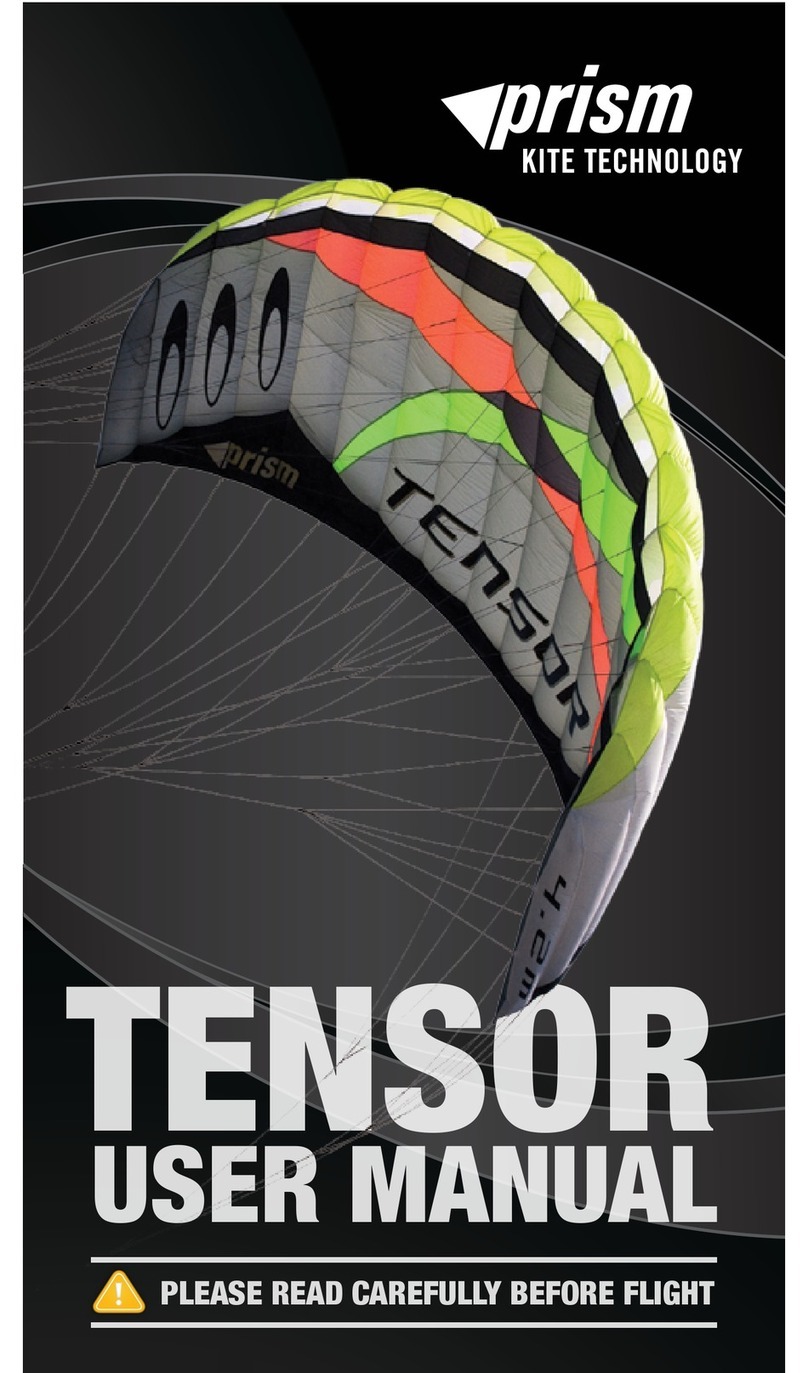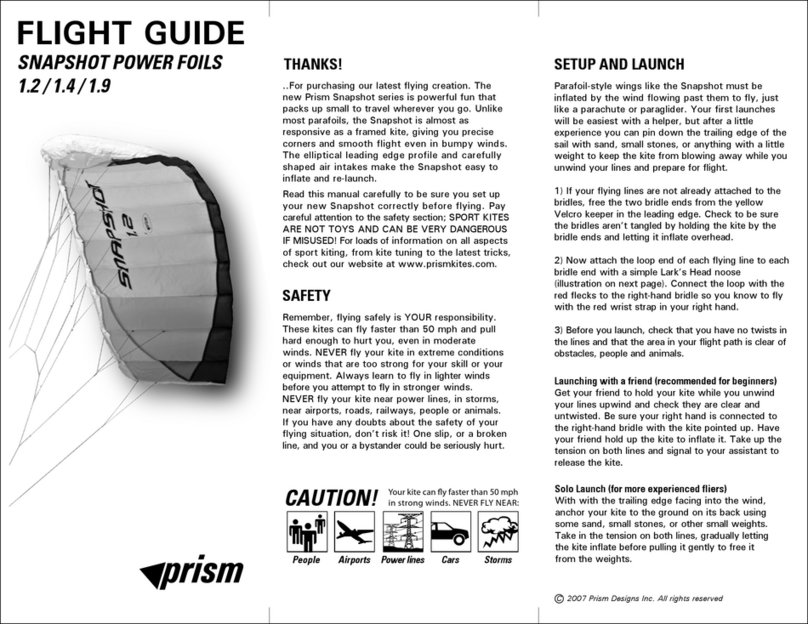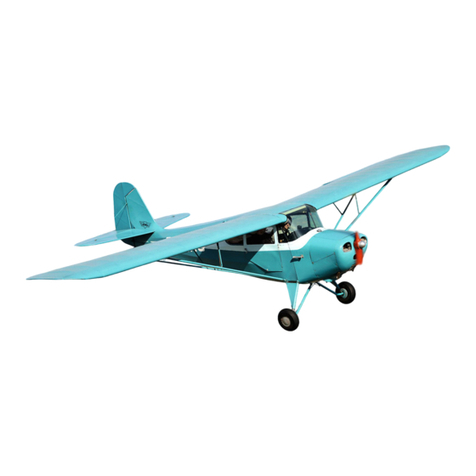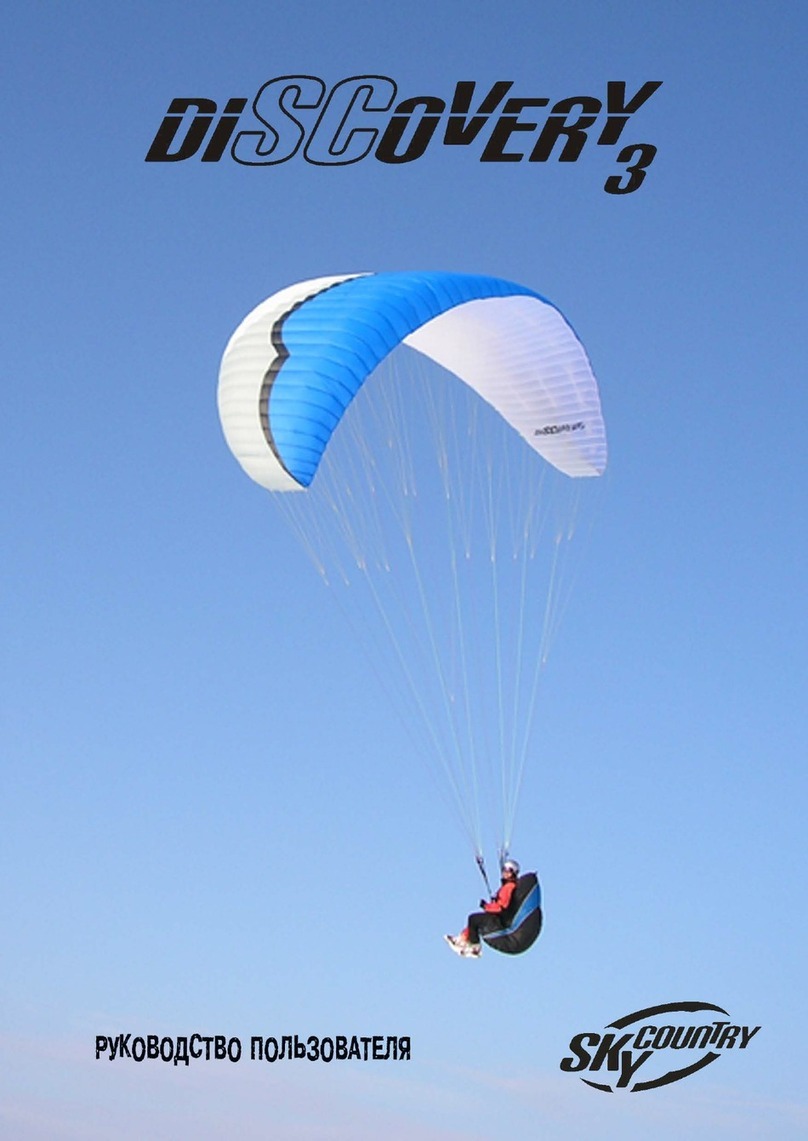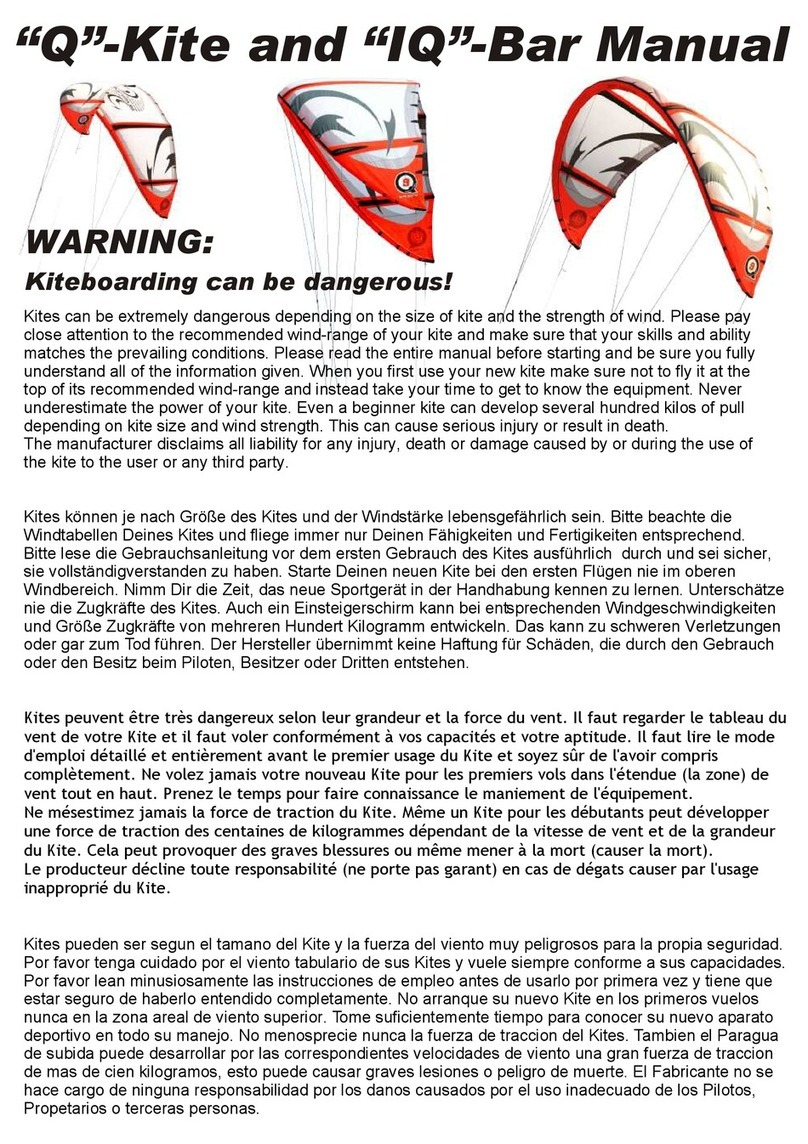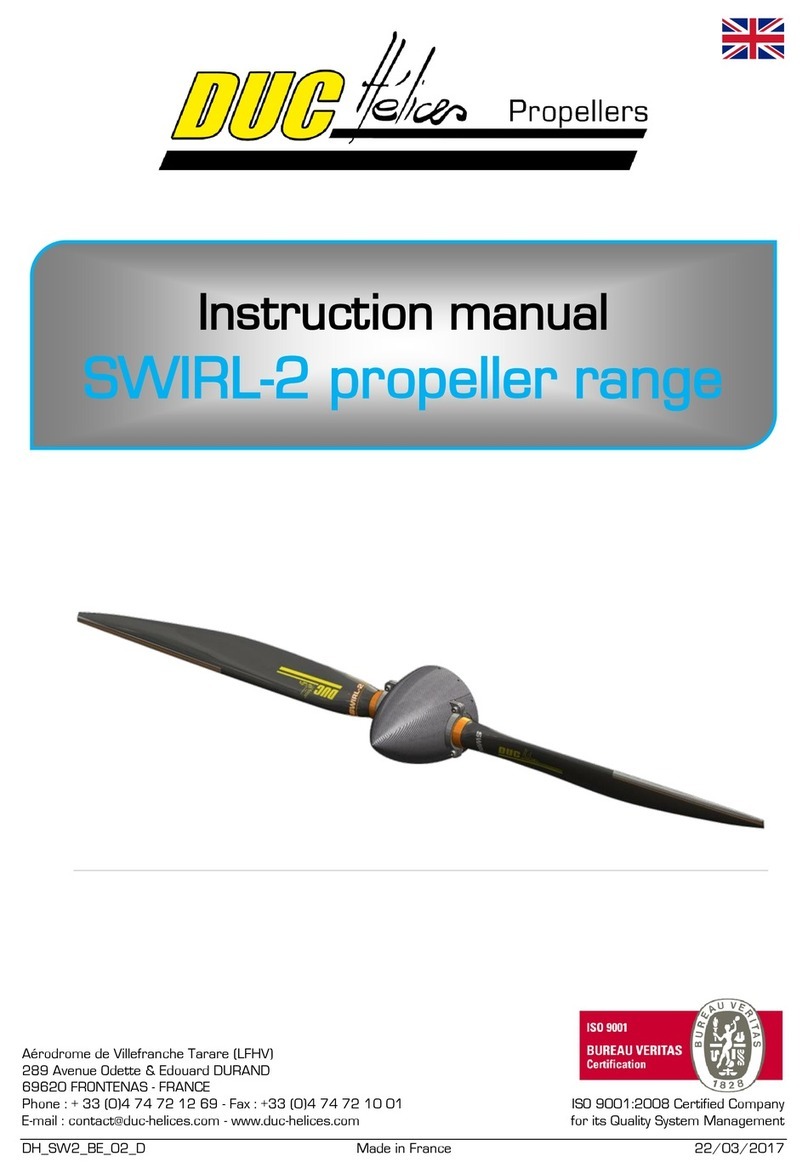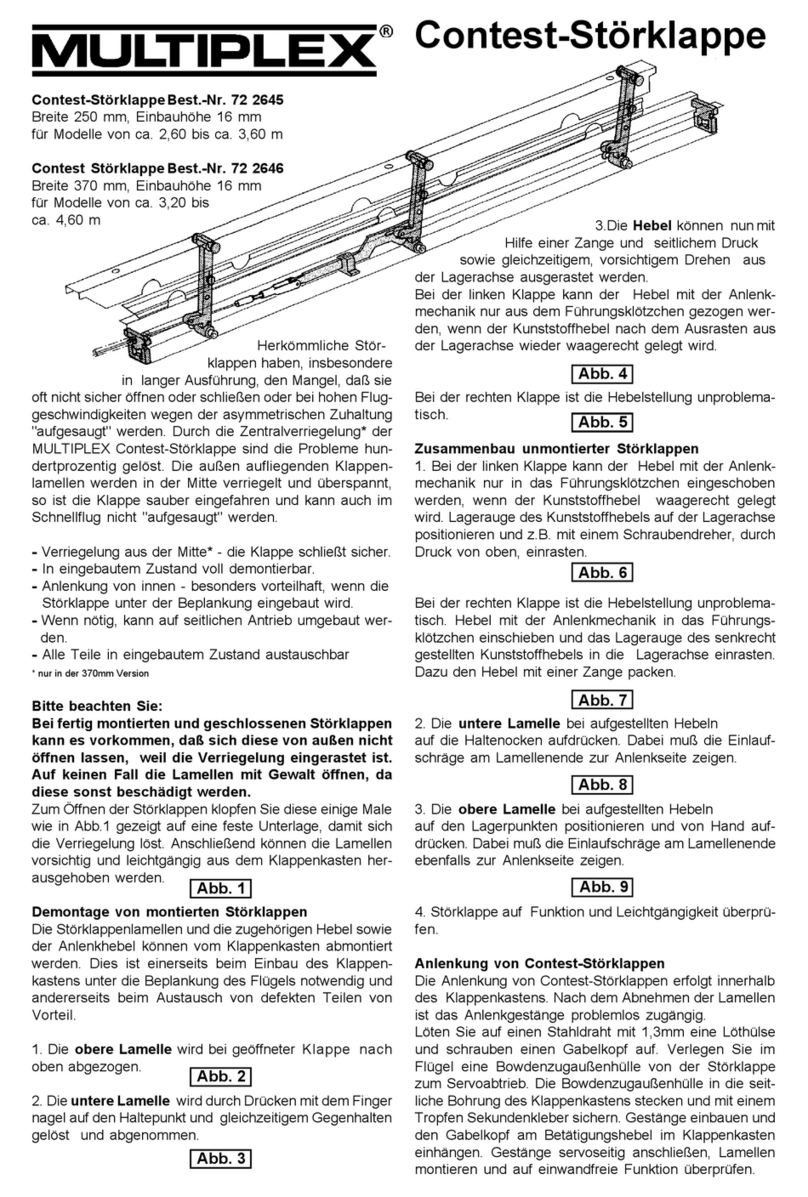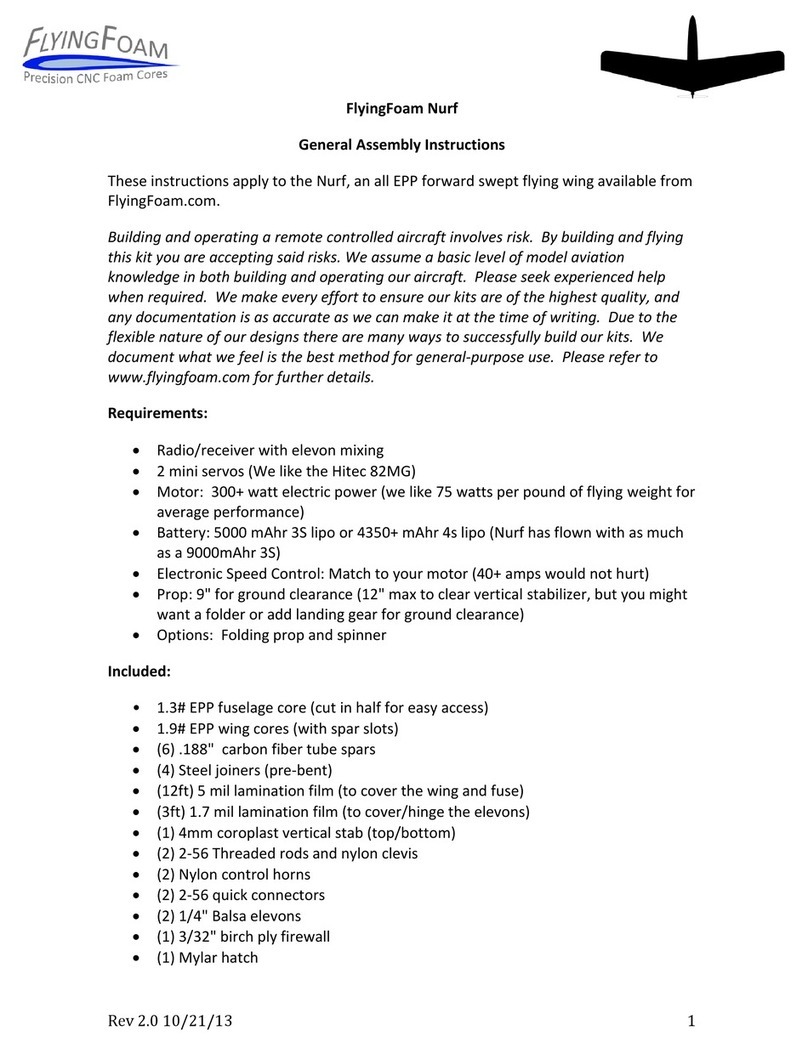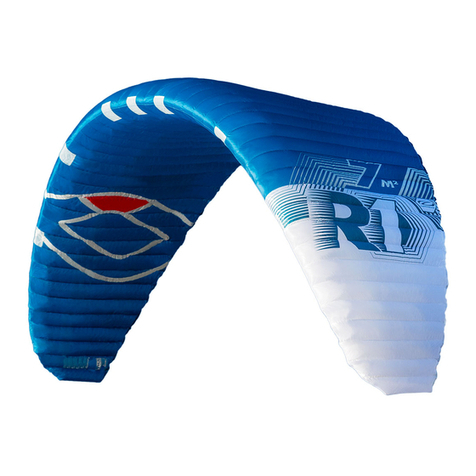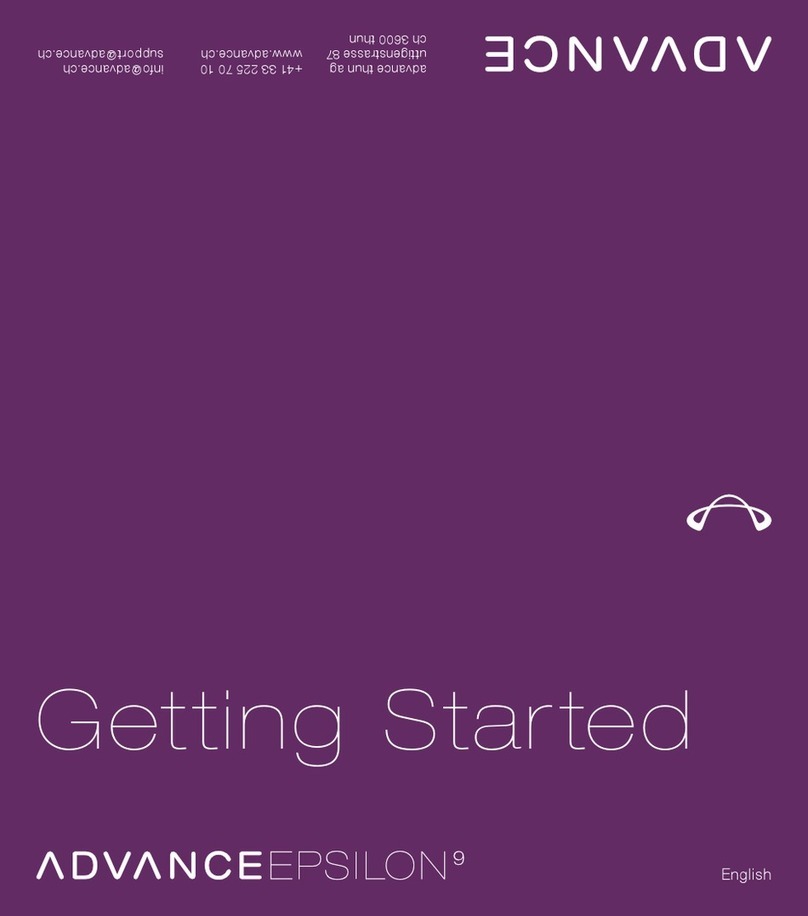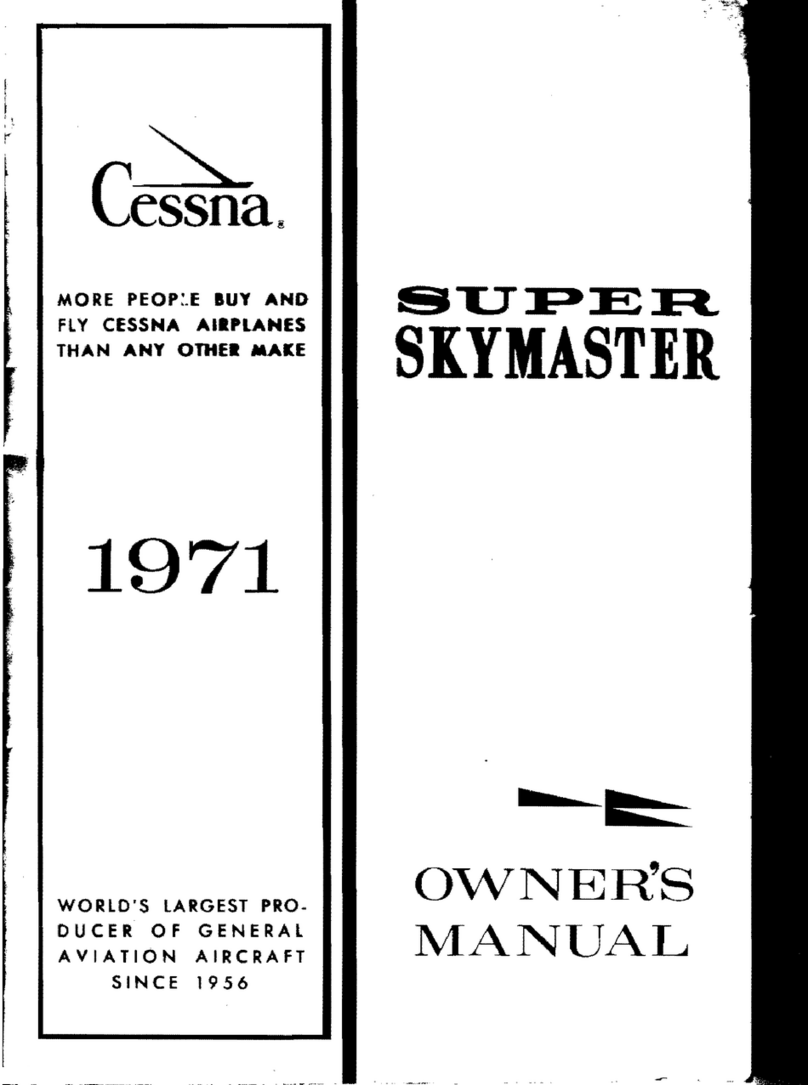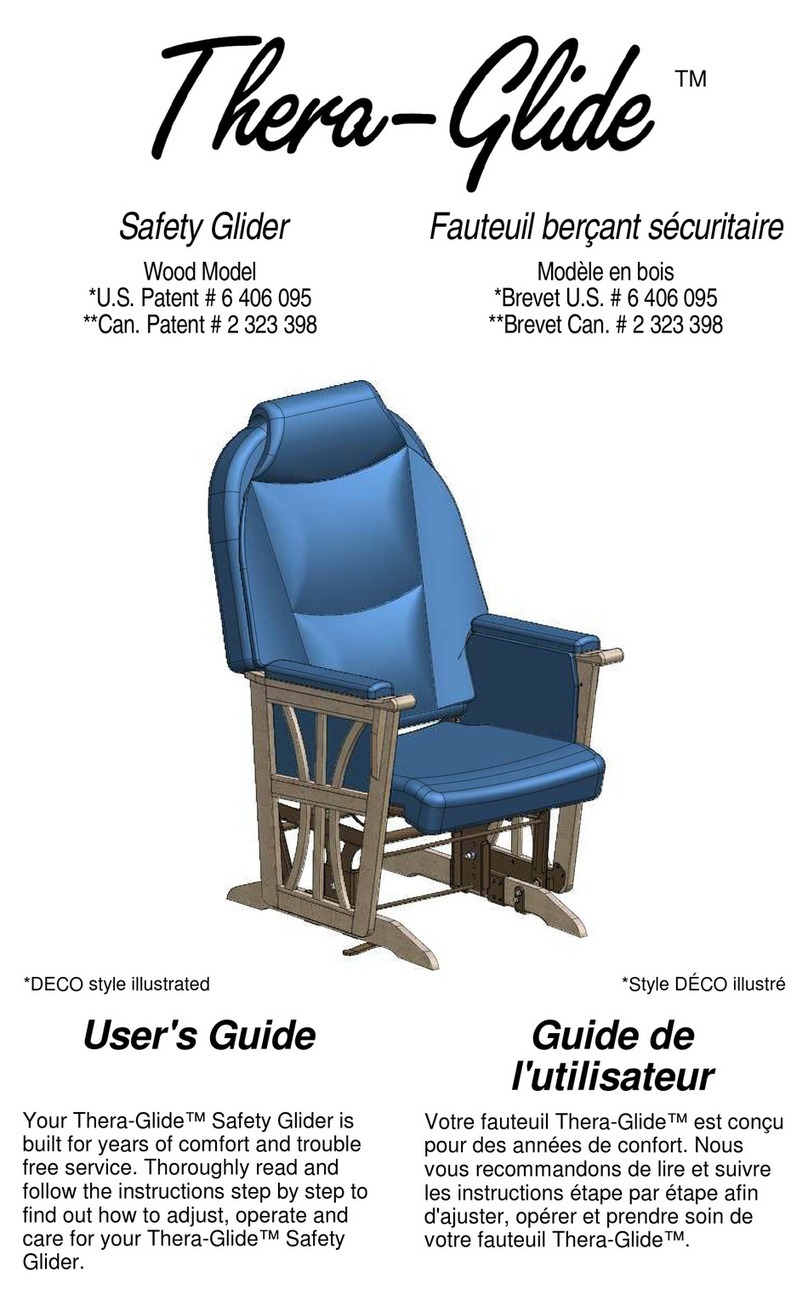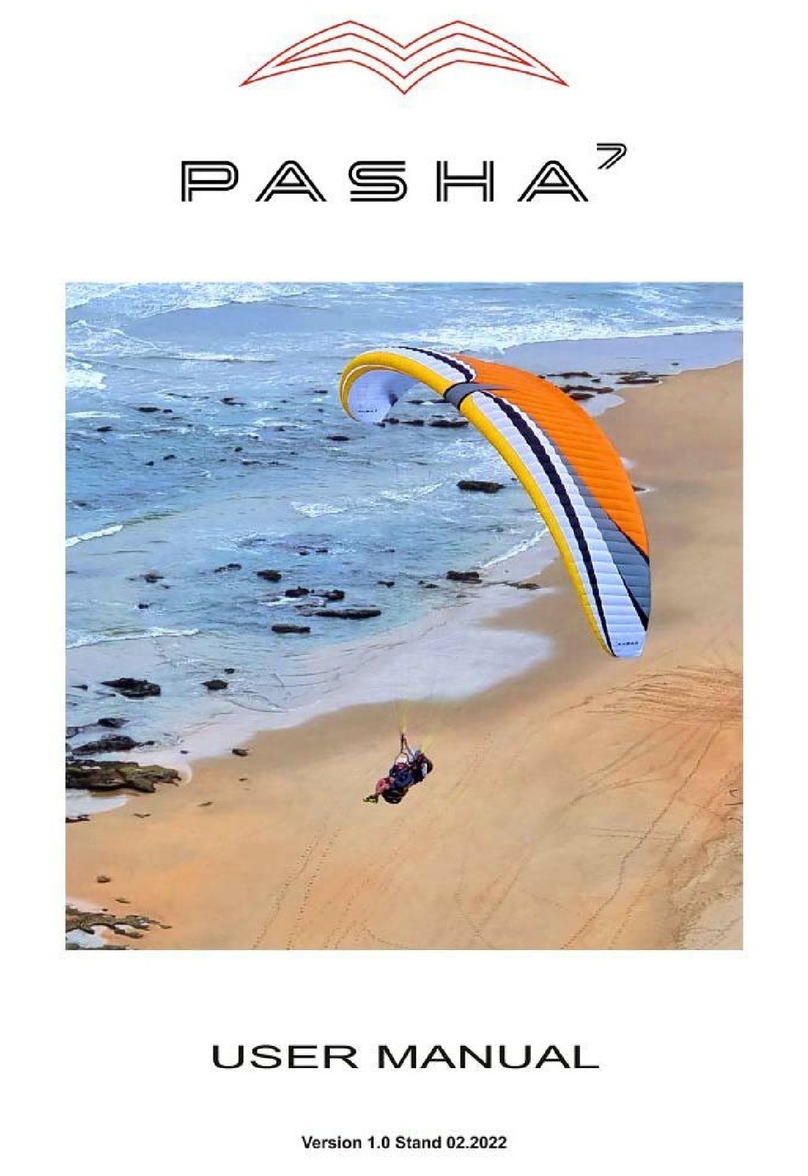PRISM+ Tantrum 250 Manual

pilot’sguide
The Tantrum is the perfect introductory trainer kite that delivers speed and maneuverability with impressive pull.
The easy-to-use control bar, safety leash and aerodynamic wing profile makes it a perfect introduction to traction kiting, kiteboarding, or all-around fun.
Mesh air inlets hold a clean aerodynamic wing profile and a central vent drains sand or water if needed.
Read this guide carefully to be sure you set up your Tantrum correctly before flying. Pay extra attention to the safety section: KITES ARE NOT TOYS
AND CAN BE DANGEROUS IF MISUSED. For more information on all aspects of sport kiting check out our website at www.prismkites.com.
— The Prism Crew
safety
Flying safely is YOUR responsibility. Your kite can fly faster than
50 mph and pull hard enough to hurt you, even in moderate winds.
NEVER fly your kite in extreme conditions or winds that are too
strong for your skill or equipment. Always practice in lighter winds
before you attempt to fly in strong winds.
Kites are not designed for type of man-lifting activity. Never attach
yourself permanently to the kite and never attempt to jump with
your kite.
NEVER fly your kite near power lines, in storms, near airports,
roads, railways, people or animals. If you have any doubts about
the safety of your flying situation, don’t risk it! One slip, or a broken
line, and you or a bystander could be seriously hurt.
where to fly
Choose your flying spot carefully to avoid turbulent wind. Like
whitewater in a river, wind that flows past obstacles like trees,
buildings and hills becomes gusty and choppy and can make con-
trolling your kite difficult or impossible. The best place to fly is an
open beach or field with wind blowing in from off the water.
If you have such a place available, it’s worth the extra travel
time to get there because you’ll learn to fly in a fraction of the
time. If you have to fly inland, look for wide open fields with
no trees, buildings, or hills for at least a half mile upwind. With
experience, you’ll be able to fly more easily in less than perfect
conditions more easily, but when you’re just learning, a smooth,
consistent wind makes a huge difference.
the wind window
The flight area of the kite is called the Wind Window and it extends
in a semi-circle from the left to the right side of the pilot. In the
middle of the Wind Window, known as the Power Zone, the kite will
fly fastest and generates the most pull.
As it reaches the edge of the window it will pull less and slow to a
stop. The Zenith, directly above the pilot at the top of the wind
window, is the best place to “park” the kite when you want to rest
your arms and minimize pull.
In a normal launch, the kite is flown from the ground through the
middle of the wind window up to the zenith. This will result in
near-maximum pull. For this reason, it is important before launch
to check that the lines are attached correctly and not tangled,
and that your safety leash is securely attached to your wrist. Make
your first flights in lighter winds (10mph is perfect) until you are
familar with the power and handling of your kite.
setting up
Take the kite out of the bag and unfold it flat on the ground with
the logo side facing up. Your control bar and flying lines should al-
ready be attached to the red and blue bridle pigtails on either side
of the kite. If they aren’t, tie the red and blue line loops to the red
and blue bridle pigtails using a Lark’s Head knot (below).
Unwind some line from the control bar so you can hold the kite by
the bridle pigtails and inflate it over your head with the mesh air
inlets facing the wind. With the kite inflated overhead, check that
all bridle lines are clear and untangled.
Lay the kite back on the ground with the ground with the trail-
ing edge facing the wind and and put some sand or other suitable
weight on the rear edge of the sail to keep it from blowing away.
Walk slowly backwards into the wind as you unwind your flying
lines from the control bar. Lay the lines on the ground parallel to
each other and check for tangles as you go.
When you reach the end of the lines, attach the safety strap to
your right wrist and hold the control bar in front of you with the red
end on the right.
first flight
Soft parafoil wings like the Tantrum must be inflated by the
wind flowing into them to take shape and fly, just like a modern
parachute or paraglider.
With your arms outstretched in front of you, pull in the lines just
enough to inflate the sail, then take a step backwards and sweep
your arms down and back briskly to launch. Hold your hands even
and the kite should climb straight up into the sky.
Once airborne, pulling the right line slightly will turn your kite
clockwise, pulling left will turn it counterclockwise. The kite will
turn in the direction of your pull and keep turning until you even
out your hands.
Practice making figure eights in the sky by alternating upward
turns until you get a feel for keeping it in the air. If you repeat-
edly turn in one direction, you will build up a series of twists in the
line. After around 10 twists, your lines will have noticeable friction
as they slide past each other. When friction builds, make turns
in the opposite direction until the twists are removed.
SAFETY LEASH:
If at any point the kite pulls too hard or you start to lose con-
trol, just let go of the control bar and the safety leash will cause
the kite to collapse and settle to the ground. In an emergency, pull
the red tabs on the wrist strap to disconnect from the kite.
FLY HERE DON’T FLY HERE
Obstacles create turbulence downwind
landing area
landing area
power zone
zenith
220
LEADING EDGE AIR INLETS
VELCRO SAND DRAIN
CONTROL BAR
LARK’S HEAD KNOT
SAFETY LEASH
BRIDLES
BRIDLE PIGTAILTRAILING EDGE
PULL TIGHT
For attaching ying lines
to bridle pigtails
220
LEADING EDGE AIR INLETS
VELCRO SAND DRAIN
CONTROL BAR
LARK’S HEAD KNOT
SAFETY LEASH
BRIDLES
BRIDLE PIGTAILTRAILING EDGE
PULL TIGHT
For attaching ying lines
to bridle pigtails
M
I
N
I
M
U
M
S
P
E
E
D
A
N
D
P
U
L
L
M
I
N
I
M
U
M
S
P
E
E
D
A
N
D
P
U
L
L
MA
Pull Left
to
turn left
Pull Right
to
turn right
Hold hands even
to
go straight
LAUNCH
STEERING
X SPEED AND PULL
Practice figure 8’
s first!
Land here Land here
Low Pass
Loop
Square
Power
dive
BASIC MANEUVERS
220
22 0
22 0
22 0
22 0
22 0
22 0
22 0
22 0
22 0

flying tips
•Expectsome“unplannedlandings”whileyoulearntosteerthe
kite. Most people take at least half an hour in steady winds
to get the hang of it.
•Holdyourarmsoutstretchedinfrontofyouatchestheightas
you fly, not over your head. Holding your arms high over your
head will only make it more difficult to control the kite.
•Usesmallhandmovementssoyoudon’tover-control.
•Afteran“unplannedlanding,”checkthekitecloselyforloose
parts or tangles before you re-launch.
Light Winds: Light wind flying takes extra practice. The trick is to
keep tension on the lines at all times by constantly moving around
on the field. Gain altitude by walking backwards, and regain lost
ground by moving forward while the kite glides down and away.
Keep the kite moving and turn it before it comes to a stop.
Strong Winds: Launch closer to the edge of the wind window to
avoid getting yanked forward when the kiteblasts straight up into
the power zone. Be sure your flying area is clear of tripping hazards
in case you get pulled forward. Don’t fly in strong winds until you
are comfortable steering the kite in moderate conditions.
landing
To land, fly the kite all the way to the edge of the wind window and
slowly steer downwards. The kite will settle to the ground. Have
a helper catch it and secure it to prevent it from blowing away
in stronger winds. In an emergency, simply let go of the control bar
with both hands and the safety leash will collapse the kite. Pull the
red tab on the wrist strap to disconnect from the kite if necessary.
packing up
Be sure the kite is secured by a helper or weighted on the ground
to keep it from blowing away.
Walk towards the kite as you wind the flying lines in figure eights
onto the control bar to prevent twists or tangles. When you get
close to the kite, use the wrist strap and elastics at the bar ends
to secure the lines on the bar. Leave the bar and lines attached to
the kite to prevent tangling the bridles.
If you need to remove the lines for some reason, tie the two bri-
dle pigtails together to prevent the bridles from getting tangled.
Shake and sand or dirt from the kite and fold it from tips to middle,
then from trailing edge to leading edge until it is small enough
to fit in the bag. Fold the the bar with lines attached into the bag
and store together.
The cords on the outside of the bag can be used as shoulder straps.
Adjust their length with the cord lock hidden just inside the mouth
of the bag.
removing sand from the kite
Open the Velcro closure at the middle of the trailing edge of the
kite and slide out the fabric tongue to hold it open. Shake sand
towards the opening to drain. Small amounts of sand or water can
be shaken out in flight.
troubleshooting
If your kite doesn’t seem to be flying correctly, check the following:
Is there enough wind? Your kite will need around 4-7 mph of
smooth wind to fly depending on your skill. Lighter winds are
more difficult for beginners but become easier with practice.
Are there obstacles disturbing the wind? Wind can become tur-
bulent and inconsistent from trees, hills, buildings, etc. nearby.
You’ll feel turbulence in the lines as irregular pull in the lines
and/or erratic behavior in the kite.
Are you holding the control bar correctly? The color coded red bar
end should be in your right hand, blue in your left.
Are your bridles tangled? Sometimes a bridle line can become
snagged on the kite or a line attachment point and affect the fly-
ing shape of the wing. Inflate the kite overhead and inspect each
bridle while holding it from the line attachment pigtails.
Are your flying lines the same length? Occasionally lines can
stretch unevenly, causing the kite to veer in one direction. If they
are uneven by more than an inch, adjust the knot position where
lines attach to the control bar leaders to even them out.
If none of these points solve the problem and your kite still doesn’t
fly correctly, contact your retailer or us directly and we’ll be happy
to help.
care and repair
The advanced materials in your kite are durable and designed
for a long life with minimal maintenance. Keep your kite out
of the sun when not in use to keep the sailcloth from fading.
Beach sand is abrasive and will wear on bridles, so do what
you can to dust off the sand after a session at the beach.
A freshwater rinse is a good idea if your kite has been swimming
in salt water. Keep your kite out of hot car trunks and don’t use
solvents for cleaning.
SAIL REPAIRS: Your kite will last a long time unless you like to fly
near cactus or barbed wire fences. Many tears and punctures can
be invisibly repaired using a special transparent adhesive film
which is unaffected by moisture or UV from the sun. Repair tape
and other repair materials are available from the spare parts section
of our website at www.prismkites.com.
TO SEND IN A REPAIR, download our repair form from the
website and include it with your kite so we know who you are
and how we can help.
videos and more information
Visit www.prismkites.com/support for video tips on more advanced
tricks, tuning, and flying sport kites.
specifications
TANTRUM 220 TANTRUM 250
Wind Range 5-25 mph 4-25 mph
Kite Size 220 cm 250 cm
Packed Weight 21 oz 26 oz
Line Length/Weight 85’/150 lbs 85’/300 lbs
Line Material Polyester Dyneema
Includes Flying lines, control bar, safety leash
TRAILING EDGE
our word At Prism, we are confident you’re going to
have a great time with every product we make. But for any
reason you’re not happy and your retailer is unable to help,
let us know and we’ll do what it takes to make things right.
Damage due to normal wear and tear can almost always
be repaired at a reasonable charge. Spare parts for all
Prism kites can be ordered direct from our web store at
www.prismkites.com.
4214 24th Ave. West
Seattle, Washington 98199
Phone: 206.547.1100
Fax: 206.547.1200
e-mail: [email protected]
This manual suits for next models
1
Table of contents
Other PRISM+ Aircraft manuals
